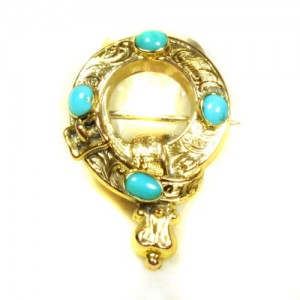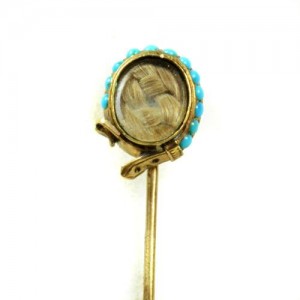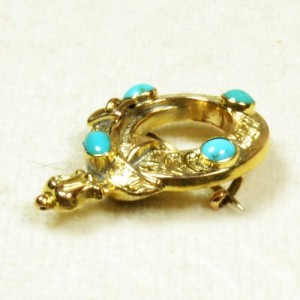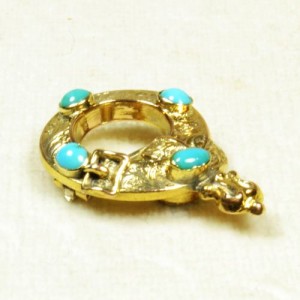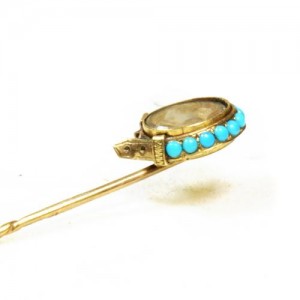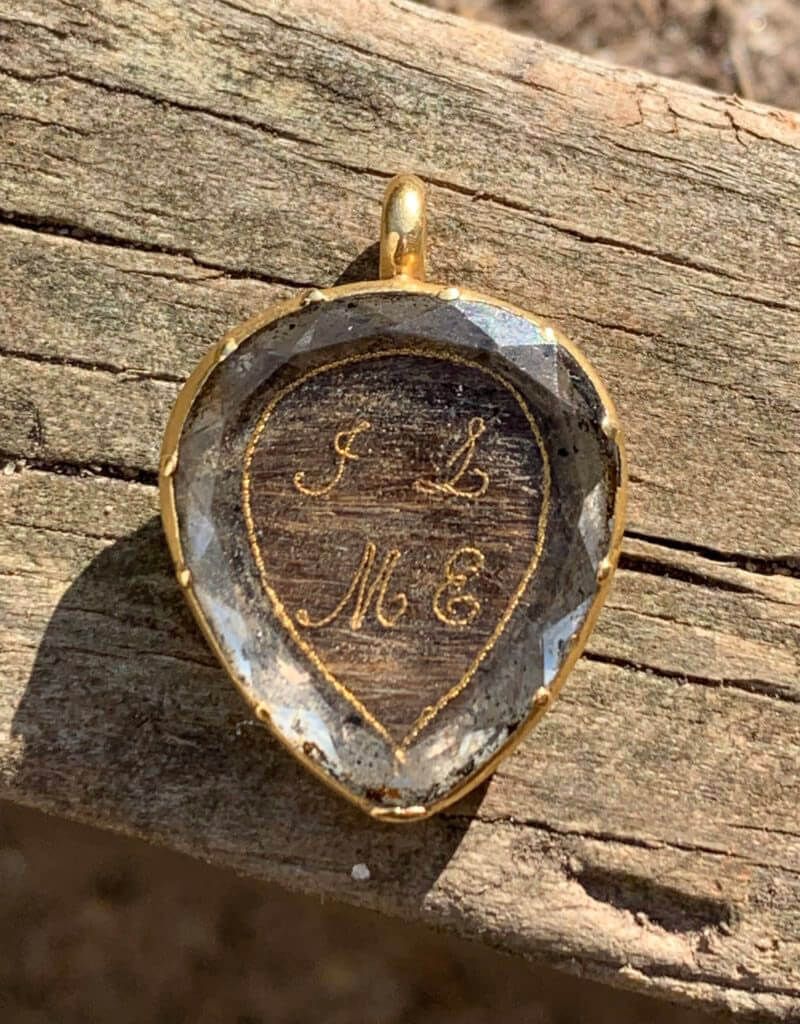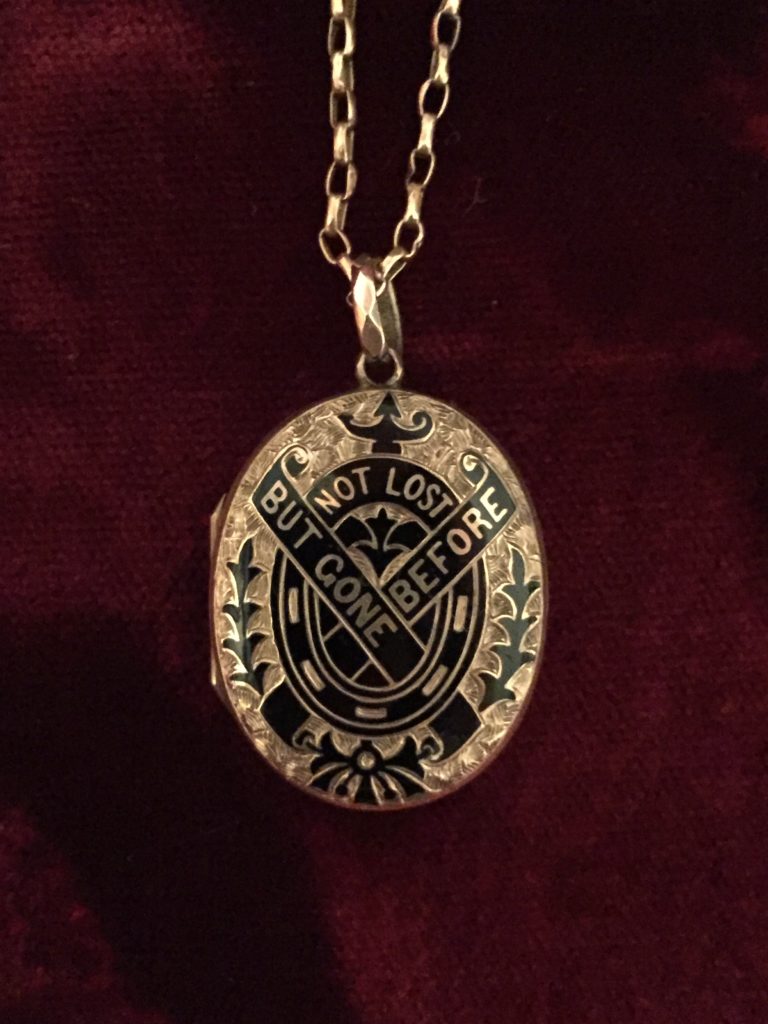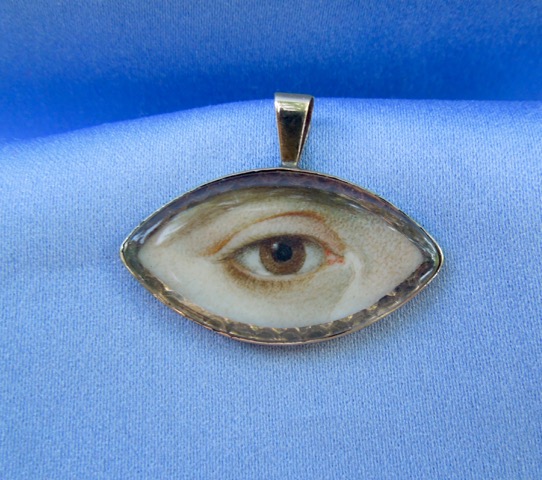Turquoise, Belt, Buckles and Garters
Love is a circle. A constantly repeating message of devotion, one that repeats often in jewellery symbolism; a continuity of love that forever spirals into itself and never ends. Today, let’s see how the interpretation of the buckle/garter motif in different jewels encapsulated the sentiment of love, what its origins were and we will also see the use of turquoise as a sentimental token of love.
Function is at the heart of the belt motif; a function which identifies the importance of necessity in the symbol and one which connects two people through a requirement. The belt/buckle motif ties together two people by symbolically wrapping around and tying itself. It keeps the concept of love secure, regardless of the pressures that may be against it.
In the 19th century, which is where the motif found its greatest prominence, the use of the belt/buckle had developed from Roman style buckles into ornamentation. Adorned designs and ceremonial uses being typical in earlier times until cheaper, moulded, methods of production in the 15th century allowed for general access to the device by the public.
From its constant visibility in jewellery symbolism, many pieces from the 19th century are resonant of The Most Noble Order of the Garter, an order of chivalry founded in 1348. The order is the highest honour that can be bestowed upon a person within the United Kingdom and within the crest, the symbol can be seen encapsulating St George’s Cross with ‘Honi soit qui mal y pense’ (shamed be he who thinks evil of it) written within. This honour is reserved for the Sovereign, Prince of Wales and twenty-four members.
Origins of the garter and sentiment are vague, however all relate to Edward III. At the Battle of Crécy, he said to have given his garter as a signal. Due to its chivalrous nature, it has been suggested that it was a revival of the Round Table or even a way to claim the French throne (shame on those who would oppose the King’s desire for the throne). Another interpretation is that while dancing with Joan of Kent, her garter slipped to her ankle and caused humiliation. Edward placed the garter around his leg in an act of chivalry and the motto was said as a way to chastise anyone who laughed and lacked humility. The year of foundation is said to be 1348, which is the date of identification for when Edward issued the Garter’s vestments.
Much the same way as blue enamel is an identifier for a loved one to be considered royalty, the belt/buckle/garter is a way of bestowing this honour upon a loved one. Chivalry, as a concept which was revived by the Romantic period of the 19th century.
The code of conduct for chivalry was outlined in The Song of Roland (translations here and here), a poem based around Charlemagne and the Battle of Roncesvalles, 778. The Song of Roland reached popularity in the 12th to 14th centuries, with the earliest copies being between 1140 and 1470 in Old French. Much of what we understand today as being a knight’s code of chivalry are outlined in the poem through character behaviour; this being piety under god and maintaining the Church, honour, respect to women, guarding fellow knights, protection of the defenceless and to always tell the truth.
Which relates nicely back to the values of the Gothic Revival period. As discussed previously on Art of Mourning, this period was one of a return to the values of the pre-Enlightenment, where the simple trappings of life and judgement under god was part of living a pious lifestyle. Much of this thought was a reaction to religious non-conformity in an effort to swing back to the ideals of the High Church and Anglo-Catholic self-belief.
Heavy industry was on the rise and modern society (as we consider it today) was established, a time of radical change that challenged pre-existing ideals of society. Though there had been growing small scale social mobility from the late 17th century, the late 18th and early 19th centuries saw the middle classes having the opportunity to promote through society with the accumulation of wealth.
Augustus Welby Northmore Pugin, a designer, architect and convert to Catholicism, saw this industrial revolution as a corruption of the ideal medieval society. Through this, he used Gothic architecture as a way to combat classicism and the industrialisation of society, with Gothic architecture reflecting proper Christian values.
Ideologically, Neoclassicism was adopted by liberalism; this reflecting the self, the pursuit of knowledge and the freedom of the monotheistic ecclesiastical system that had controlled Western society throughout the medieval period. Consider that Neoclassicism influenced thought during the same period as the American and French revolutions and it isn’t hard to see the parallels. The Gothic Revival would, in effect, push society into the paradigm of monarchy and conservatism, which would dominate heavily throughout the 19th century and establish many of the values that are still imbued within society today.
Combine these values of chivalry and piety under god and there you have the perfect sentiment for the 19th century in jewellery design. A token of love that could be given or dedicated to a loved one through life or death, while the meaning still retains its value.
This is why the belt/buckle/garter is so important as a visual motif for the 19th century and displayed so prominently in many jewels, even being one of the most popular designs in rings later in the century. Hairwork that was woven through the band was encapsulated in the belt and tied together in the buckle for its devotion of love and honour through a relationship.
Turquoise and Sentimentality
‘Prosperity’, ‘youth’, ‘innocent love’ and ‘fortune favours thee’ are the sentiments with which turquoise would be used within a jewel. When looking at these jewels, you see two different reasons for their form; one is a stick pin, the other is a brooch. Both contain identical materials and symbols, but both were worn prominently in places which would be viewed (torso and head). From the turn of the 19th century, turquoise had risen in popularity and was seen quite prominently in memorial and sentimental jewels, combined with the knot motif.
The expression ‘tying the knot’ is thought to be where the couple had their hands bound in an endless knot as part of the wedding ritual, however, there are several other explanations for this related to the wedding ceremony itself. One of the more enticing explanations from E., M. A. Radford’s The Encyclopedia of Superstitions is that:
“In the seventeenth century, one or two of the bride-favours were always blue. These were knots of coloured ribbons loosely stitched on to the wedding gown, which were plucked off by the guests at the wedding feast, and worn as luck-bringers in the young men’s hats.”
Note the use of blue. Blue turquoise used as a token of betrothal to be worn relates back to its use in jewellery. ‘Something that’s blue’ in the turquoise and the garter being tied are all relevant symbols for marriage and are reflected in how these pieces would be perceived when worn by a lady.
When combined the with the rise of floral styles within jewellery design, turquoise was a decorative material for its colour and how it could embellish gold design. The adaptation of the floral style was one that resonated with the language of flora and fauna. The Illustrated Language of Flowers by Anna Christian Burke categorised over seven hundred elements of flora and fauna, which gave the Victorians a resonance of design elements to represent their emotions in jewellery and ephemera designs for gifts towards others. Even more symbols were built upon this, increased only by the discovery of challenging thought in a time where science and religion were becoming equals, to make the smallest element of design important to represent a relationship in society.
Looking to the rise in peripheral styles of the 19th century,La Belle Assemblè, a fashion magazine, referred to the French hairwork artist Limmonièr in a revolutionary light and the mention of turquoise shows just how important the material was to popular styles:
“…the new hair jewelry made by Limmonièr is an ornament for all times and places. He expands it into a broad ribbon as a bracelet and fastens it with a forget-me-not in turquoise and brilliants; weaves it into chains for the neck, the flacon, or the fan; makes it into a medallion, or leaves and flowers; and of these last the most beautiful specimens I have seen have been formed of the saintly white hair of age. This he converts into orange flowers, white roses, chrysanthemum and most charming of all, clusters of lily-of-the-valley.”
Note the combination of Limmonièr’s turquoise and brilliants into the forget-me-not design. This is a motif that can be seen in the below pendant:
Turquoise transcends its meaning to become an ideal mineral for relationship status, interpreting an organic design into jewellery and also denoting the statement of love or mourning. Importantly, it introduced colour in mourning. For the stages of mourning, one of the most important factors is colour. For example, turquoise was often used as a during the half half morning stage, post Third Stage (or Ordinary stage) as a mourning material, with its influx of colour. This stage was introduced after twenty-one months, involving the omission of crape, inclusion of black silk trimmed with jet, black ribbon and embroidery or lace were permitted. Post 1860, soft mauves, violet, pansy, lilac, scabious and heliotrope were acceptable in half mourning. This period lasted three months.
Love
If anything, the combination of these symbols show that no jewel is simply what it seems. Love is piety and fidelity which puts the loved one first and a jewel can denote this through its most decorative elements. The belt/buckle/garter motif perfectly encapsulates a message of this, with the loved one being the identity which will be protected and offered love. The love itself forever moves in a circle and in undying, while the blue of the turquoise shows just how a status of betrothal, or possibly mourning, still connects a person to another.




